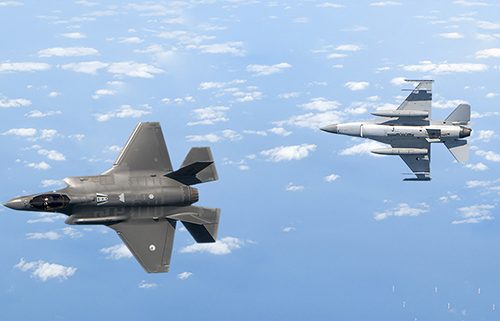The steering committee on the implementation of a parliamentary motion concerning noise measurements of military aircraft has requested NLR to prepare a report[1]. The motion was submitted by Member of Parliament Angelien Eijsink, and is therefore known as the ‘Eijsink Motion’. The report seeks to provide the steering committee with more insight into the possibilities and shortcomings of the available methods for measuring and calculating aircraft noise. The steering committee has prepared a number of research questions, and has asked the Dutch National Institute for Public Health and the Environment (RIVM) and NLR to answer them independently. Based on the RIVM and NLR reports, the steering committee has drawn up recommendations for the Minister of Defence concerning the implementation of the Eijsink Motion.
One key conclusion of the NLR report is that monitoring noise contours solely by conducting noise measurements is not a realistic approach, among other things because this would require a very large number of noise monitoring terminals. Consequently, noise contours should be based on calculations.
However, noise measurements may be used for a number of other purposes, including the provision of information to people living in the vicinity of the relevant air force bases (at Leeuwarden and Volkel), and to perform comparisons of aircraft noise measurements and calculations. Such comparisons will reveal differences between measured and calculated noise levels. These differences will increase as measurements are performed at greater distances from the air force bases.
In its report, NLR advises the steering committee to adopt the following roadmap:
- Determine, based on the recommendations made by RIVM and NLR, if a network of measurement sites would offer added value considering the information that is already available.
- If the conclusion is drawn that noise monitoring would indeed offer added value, a proposal for the network’s design can be developed based on RIVM’s and NLR’s recommendations. This would cover such aspects as the number and locations of noise monitoring terminals, and the methods used to share information with local residents.
- Present the plan to residents living near the two air force bases, and explain clearly how the proposal was prepared and what they can and cannot expect from the monitoring network.
- Prepare a definitive set of specifications for the monitoring network. Request multiple suppliers to submit a proposal offer based on these specifications, and select a supplier to install monitoring networks in the vicinity of the air force bases.
- Determine the exact locations of the monitoring sites based on measurements performed over a short period of time.
- Assess if all objectives have actually been achieved as soon as the monitoring network becomes operational, and inform local residents accordingly.
[1] R.H. Hogenhuis, et al (2016). Beantwoording vragen met betrekking tot de motie Eijsink, NLR-CR-2015-186, Nederlands Luchtvaart- en Ruimtevaartcentrum



